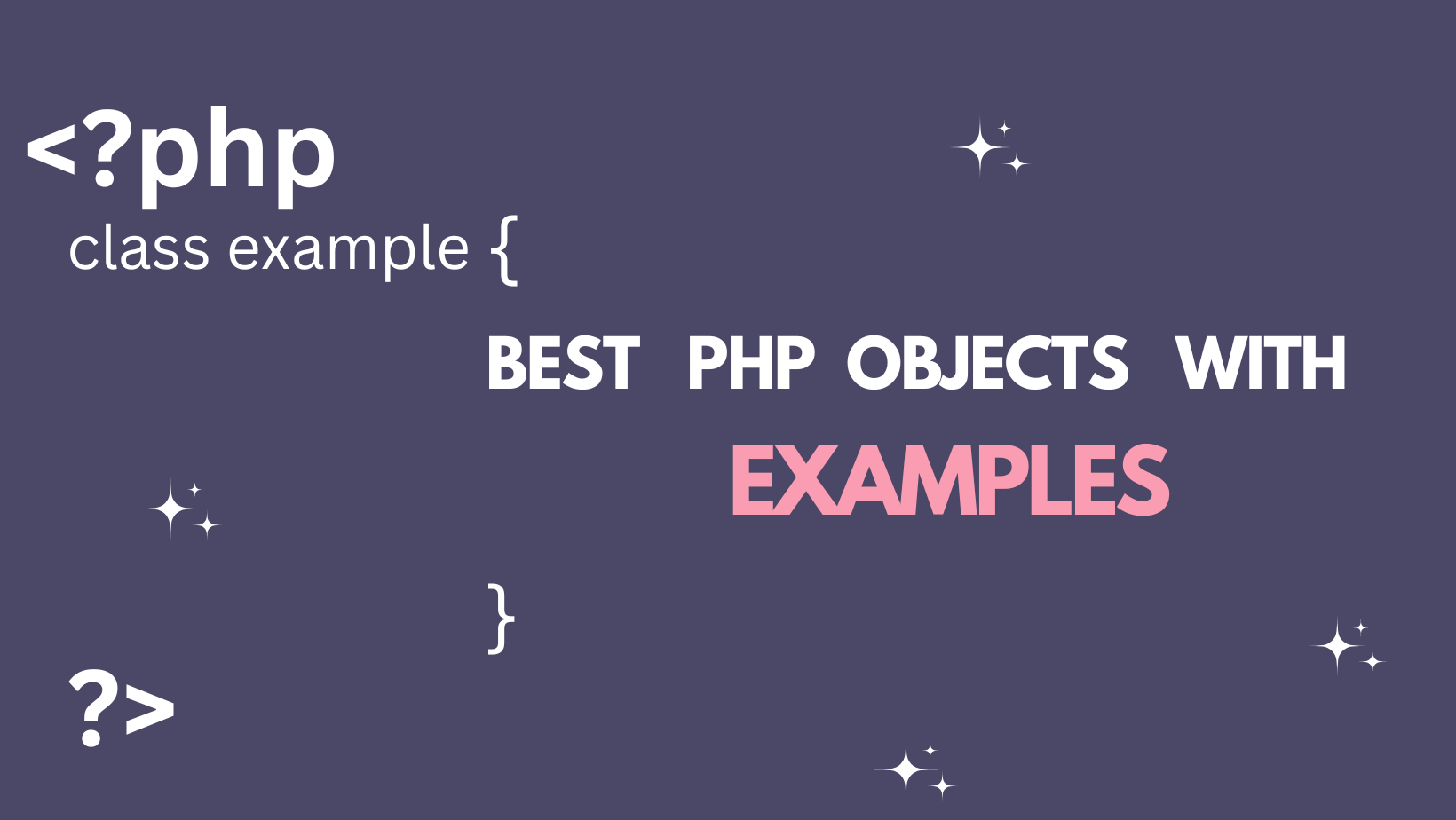PHP is a programming language that is often used for web development. There are several core objects in PHP that are useful for a wide range of tasks. Here are some examples of commonly used PHP objects, along with brief descriptions and examples of how they can be used:
DateTime: This object represents a specific point in time, and can be used to perform various operations related to date and time. For example, you can use theDateTimeobject to format dates and times according to a specific format, or to calculate the difference between two dates.PDO(PHP Data Objects): This object provides a consistent interface for accessing various types of databases, including MySQL, Oracle, and PostgreSQL. For example, you can use PDO to execute SQL queries, prepare and execute statements, and fetch results from the database.SimpleXML: This object provides a simple and fast way to parse and manipulate XML data. For example, you can use SimpleXML to parse an XML document and access its elements and attributes using object-oriented methods.stdClass: This is a generic empty class that can be used to create objects with arbitrary properties. For example, you can usestdClassto create an object that represents a user, with properties such asusername,email, andpassword.Exception: This object represents an exception, which is a runtime error that can be thrown when a problem occurs in your code. You can use theExceptionobject to catch and handle exceptions in your code, allowing you to gracefully handle errors and take appropriate action.
Here’s an example of how you might use some of these objects in a PHP script:
<?php
// Connect to the database using PDO
$pdo = new PDO('mysql:host=localhost;dbname=mydatabase', 'username', 'password');
// Execute a SQL query and fetch the results
$stmt = $pdo->query('SELECT * FROM users WHERE username = "john"');
$user = $stmt->fetch(PDO::FETCH_ASSOC);
// Create a new DateTime object for the user's registration date
$registrationDate = new DateTime($user['registration_date']);
// Calculate the difference between now and the registration date
$now = new DateTime();
$diff = $now->diff($registrationDate);
// Check if the user has been registered for more than a year
if ($diff->y >= 1) {
// Send a message to the user
sendMessage($user['email'], 'Happy anniversary!');
}
// Use stdClass to create an object representing a new user
$newUser = new stdClass();
$newUser->username = 'jane';
$newUser->email = 'jane@example.com';
$newUser->password = password_hash('mypassword', PASSWORD_DEFAULT);
// Insert the new user into the database
$stmt = $pdo->prepare('INSERT INTO users (username, email, password) VALUES (?, ?, ?)');
$stmt->execute([$newUser->username, $newUser->email, $newUser->password]);
// Catch any exceptions that might be thrown
try {
doSomethingDangerous();
} catch (Exception $e) {
// Log the error and show a friendly message to the userPHP objects | best PHP objects | examples of PHP objects | commonly used PHP objects | DateTime object | PDO object | SimpleXML object | stdClass object | Exception object | object-oriented programming in PHP | using objects in PHP scripts | msrajawat298 | mayanksinghkushwah | garimarajput748 | info.garimarajput
See More Posts:
How do I start learning about bug finding and start my journey of bug bounty programs?
8 Cool Sites That Will Make Your Life Easier
8 Best Websites For Life Hackers And Time Savers
How to Create Custom WordPress Authors Widgets: What Are They and How Do They Work?












